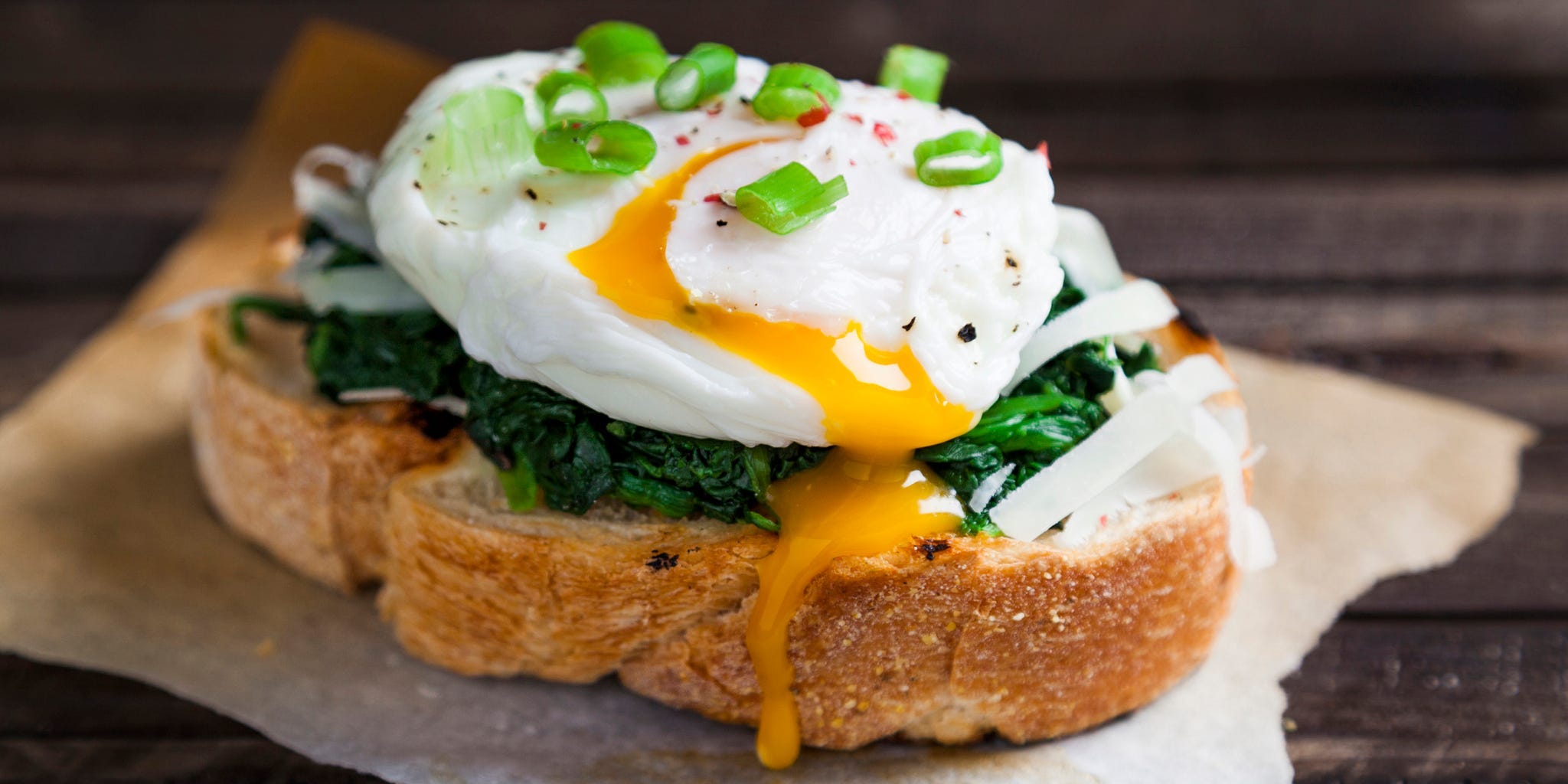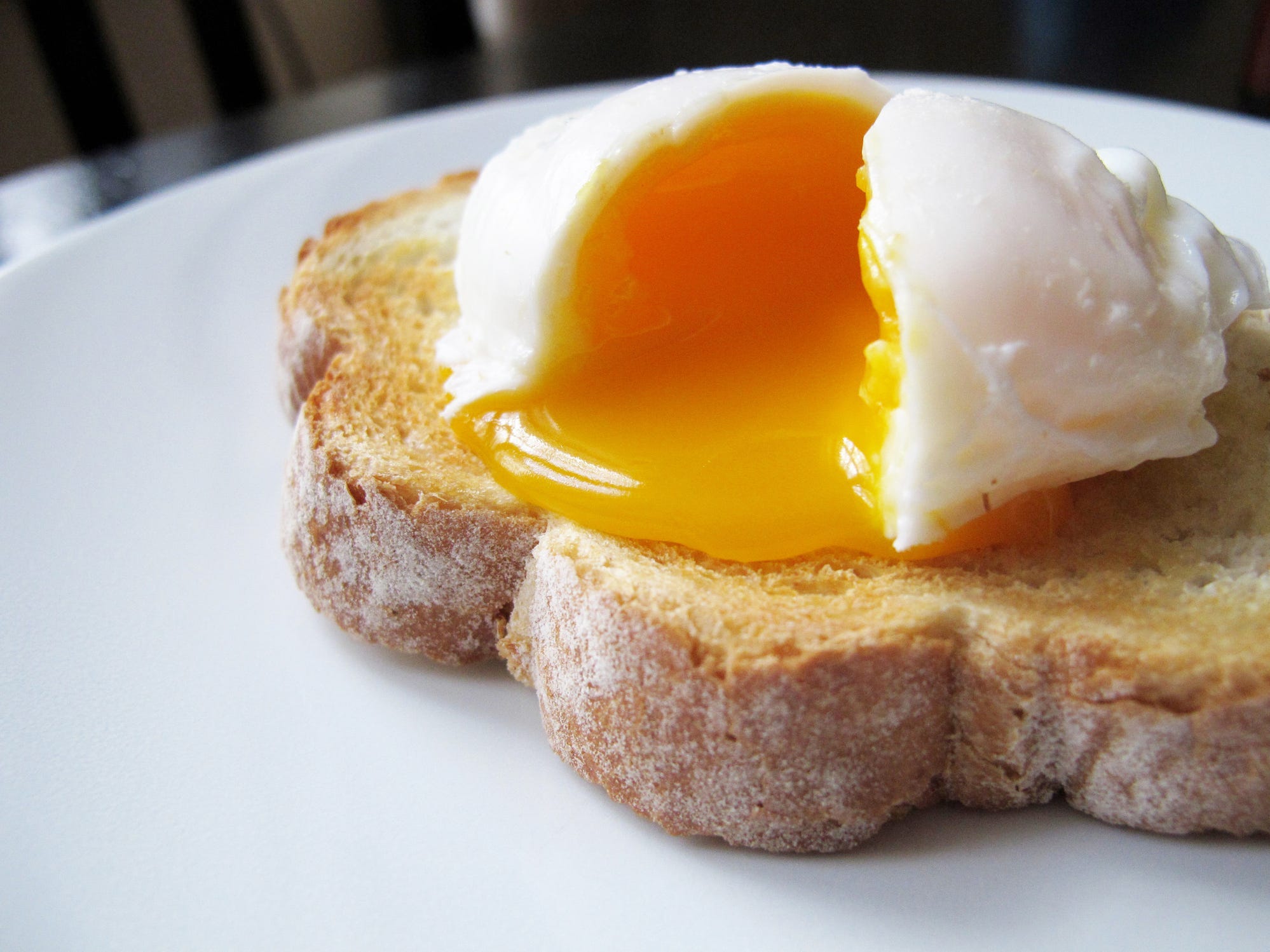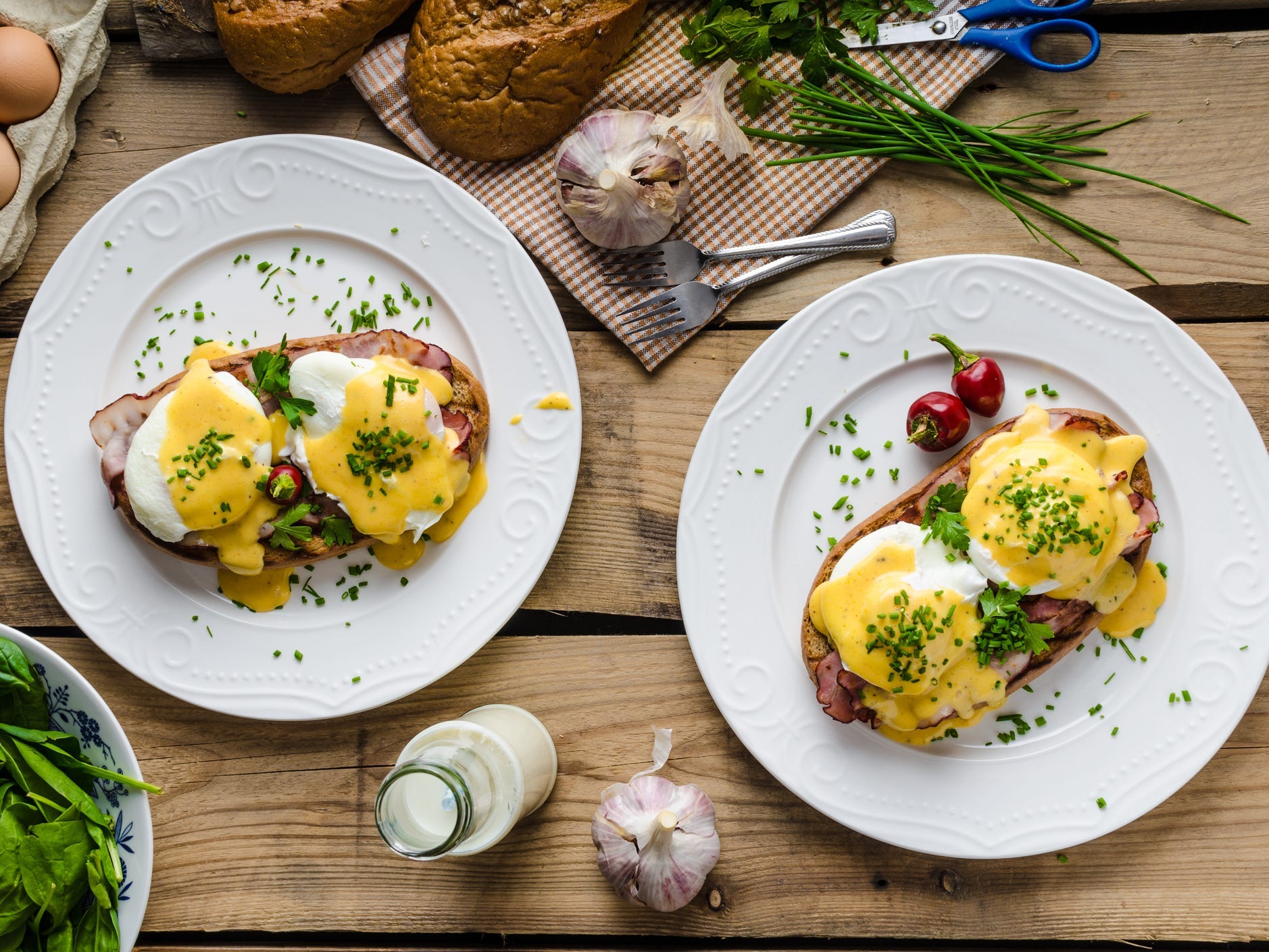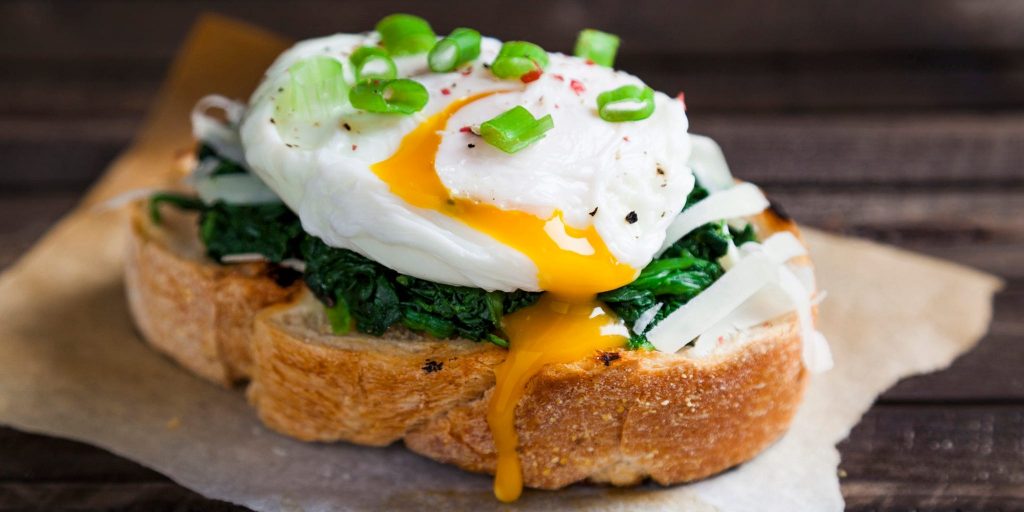
esseffe/Getty Images
- Eggs should be poached in barely simmering, salted water with a splash of vinegar added.
- Use the freshest eggs possible for tidy poached eggs; using older eggs can lead to stringy whites.
- To make poached eggs for a crowd, store them in cold water and reheat them with warm water to serve.
- Visit Insider's Home & Kitchen Reference library for more stories.
As you'll see from any good diner menu, there are endless ways to cook eggs: sunny-side-up, scrambled, hard-boiled, fried. One of the most popular ways to enjoy the breakfast staple is poached, a cooking method that involves gently cooking eggs in water until the whites are set and the yolk is runny.
Poached eggs frequently appear on eggs Benedict, avocado toast, and rice bowls, among other dishes. They've gained a reputation for being tough to perfect at home, but with a little patience and a little practice, you too can enjoy that perfectly runny yolk cascading over your English muffin.
"Poached eggs are luxurious, that's why they're special. You get a delightful texture that isn't too springy and the yolk is the consistency of a perfect sauce," explains chef Ryan Harris. Harris co-owns the breakfast and lunch restaurant Contimo Provisions in Napa, California, and has plenty of tips and tricks up his sleeve for poaching eggs at home.
Before you get started

Jody Louie took this picture/Getty Images
Use fresh eggs: "Fresh eggs poach better. The proteins stay more intact and you don't get much separation between the yolk and white," says Harris. This means a more compact poached egg with less wispy, runny white bits that can be less than appetizing.
While it's hard to tell how old eggs are unless they're handed to you by a chicken farmer, use freshly purchased eggs that are nowhere near their sell-by date. If you're not sure, Harris suggests this handy trick: submerge the eggs in a bowl full of water. "If they sink and lay on their side, they're fresh. If they start to tilt upwards, they're a little older. If they float, don't eat them," he says.
While eggs that are less than perfectly fresh are safe to poach and eat, they won't cook up as pretty.
Try adding vinegar: "Adding a bit of vinegar [to the water] can help the whites firm up and preserve the shape of the egg," says Harris. You'll just need a splash of white vinegar per pot of water. If your eggs are super fresh it may not be necessary.
Season your water: While not required, salting the water (as you would for cooking pasta) will add flavor. Harris tosses in a generous sprinkle of salt as the water starts to simmer.
Don't make a vortex: Some recipes call for swirling the water aggressively to make a vortex and dropping the egg inside, but it can encourage loose pieces of egg white to pull away. If you're just poaching one egg at a time, Harris suggests creating a gentle swirl to help the egg form a nice tight shape, not a tornado.
Don't use the swirl method if you're cooking several eggs since the motion will disturb the eggs already in the pot. The swirl method is also not recommended for less-than-fresh eggs since they tend to have thinner whites that will separate into strands.
Strain older eggs: If your egg is older, add the cracked egg to a small fine-mesh strainer and allow any runny egg white to drain off before adding it to the pan of water. This will remove any of the thin white prone to separating in the pot and becoming whispy. This isn't absolutely necessary but can help older eggs look tidier once poached.
How to make poached eggs for a crowd

PeteerS/Getty Images
If you're planning a breakfast or brunch, it's easy to poach several eggs and even store them to serve later. Harris says you can make "as many [eggs] as you can manage and keep the water temperature consistent and your mind organized."
Don't overcrowd the pan - keep enough room between the eggs so they can be completely surrounded by water without touching. And don't swirl the water; simply drop the eggs into the barely simmering water. "I start with the first egg at 12 noon and add the eggs in clockwise order after so I know which to pull out first," says Harris.
Poached eggs are great for making ahead, too. Once they're done cooking, transfer them to a bowl of ice water to cool. Move the eggs to a container with a lid and cover with cold water; refrigerate for up to three days.
To reheat, drain off the cool water and cover the eggs with hot water from the tap (boiling water is too hot). Let sit for a few minutes to warm up, drain, and serve.
Insider's takeaway
To make the best poached eggs, use extra fresh eggs and barely simmering water. Vinegar will help keep the egg tidy and salting the water adds flavor. Make a big batch and store some for a rainy day.
